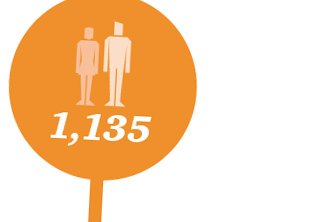Millennials and the gender pay gap
 Here’s a bit of uncheery news for the start of 2017 – despite years of progress, a woman in her 20s is still more likely to earn less today than a man of her own age.
Here’s a bit of uncheery news for the start of 2017 – despite years of progress, a woman in her 20s is still more likely to earn less today than a man of her own age.
Happy New Year, millennials!
We’ve written quite a bit about the points of difference between this generation and its predecessors in recent months. We’ve looked at its attitude to the working world and how work is changing to accommodate this generations’ ideas and expectations – but what we haven’t looked at, until now, is how gender determines your likely lifetime earnings.
The sad fact is that even for women born between 1981-2000 the gender pay gap is a reality. A woman in her 20s now is likely to earn five per cent less per hour than a man of the same age, according to figures highlighted by the Resolution Foundation.
As the foundation points out, pay gap figures tend to represent a mixture of positive choices made about balancing life and work, the characteristics and type of jobs that distinguish the work men and women favour, along with straight out discrimination. Nevertheless, it remains a good measure of how we, as a society, organise work.
The silver lining for millennial women is that, despite a pay gap existing, it’s smaller than that experienced by the previous generation – and significantly smaller than the one prior to that.
When baby boomers (born 1946-1965) were in their 20s, the gap averaged at 16%, and for those of generation X (born 1966-1980) it was 9%. In fact, the gap has fallen for every successive generation in their 20s since those born between 1911 and 1925.
The trouble is, despite positive signs, the wealth gap pattern experienced by both those in the baby boom years and those in generation X seems to be repeated in millennials. By the late 20s, through the 30s, and into the 40s, the pay gap for each of these first two groups widens.
The Resolution Foundation attributes this widening to having children. Not only do women lose market experience, but progression is more difficult for those that choose to work part-time. But even after that, the gap doesn’t close significantly. So, it’s a lifetime pay penalty.
Yet having said the pattern is the same, what’s different it the size of the wealth gap for successive generations as they age through the child bearing years. The gap peaked for baby boomers at around 35% in their early 40s, and at a similar age generation Xs suffered a gap of around 28%. Millennials haven’t reached that age yet, but figures for them aged 30 show a wealth gap of nine per cent, a touch down from the 10% at the same age endured by generation Xs, and significantly lower than the 21% difference for baby boomers.
So the trend is moving in the right direction: but the fact that there is any gap at all, 47 years after the Equal Pay Act, suggests that this is not only a challenge for 2017 but one for the age.